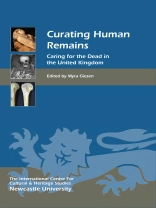The difficult and sensitive issue of how museums and other repositories should treat human remains in their possession is here addressed through a number of important case studies.
How to care for, store, display and interpret human remains, and issues of their ownership, are contentious questions, ones that need to be answered with care and due consideration. This book offers a systematic overview of the responses made by museums and other repositories in the United Kingdom, providing a baseline for understanding the scope and nature of human remains collections and the practices related to their care. The introduction sets United Kingdom practices within an international context, while subsequent chapters, all written by leading experts, cover a wide range of topics through key case studies: legislation and ethical obligations; issues of both long-term andshort-term care; differing perspectives associated with human remains collections in different parts of the United Kingdom; a comparison of attitudes and approaches in large institutions and small museums; the creative use of redundant churches; and challenges facing research/teaching laboratories and collections resulting from recent archaeological excavations.
Myra Giesen is Lecturer at the International Centre for Cultural and Heritage Studies, Newcastle University.
Contributors: Myra Giesen, Liz White, Hedley Swain, Charlotte Woodhead, Kirsty Mc Carrison, Victoria Park, Jennifer Sharp, Mark A. Hall, Rebecca Redfern, Jelena Bekvalac, Gillian Scott, Simon Mays, Charlotte Roberts, Jacqueline I. Mc Kinley, Mike Parker Pearson, Mike Pitts, Duncan Sayer, Margaret Clegg.
Содержание
Introduction: Human Remains Curation in the United Kingdom — Myra Giesen
International Perspectives towards Human Remains Curation — Myra Giesen and Liz White
Dealings with the Dead: A Personal Consideration of the Ongoing Human Remains Debate — Hedley Swain
Care, Custody and Display of Human Remains: Legal and Ethical Obligations — Charlotte Woodhead
The Impact and Effectiveness of the
Human Tissue Act 2004 and the
Guidance for the Care of Human Remains in Museums in England — Liz White
Dead and Forgotten?: Some Observations on Human Remains Documentation in the UK — Myra Giesen and Kirsty Mc Carrison and Victoria Park
Tethering Time and Tide? Human Remains Guidance and Legislation for Scottish Museums — Jennifer Sharp
Tethering Time and Tide? Human Remains Guidance and Legislation for Scottish Museums — Mark A. Hall
The Quick and the Deid: A Scottish Perspective on Caring for Human Remains at the Perth Museum and Art Gallery — Mark A. Hall
Museum of London: An Overview of Policies and Practice — Rebecca Redfern and Jelena Bekvalac
Curating Human Remains in a Regional Museum: Policy and Practice at the Great North Museum: Hancock — Gillian Scott
Curation of Human Remains at St Peter’s Church, Barton-Upon-Humber, England — Simon Mays
Archaeological Human Remains and Laboratories: Attaining Acceptable Standards for Curating Skeletal Remains for Teaching and Research — Charlotte Roberts
‘No Room at the Inn’ … Contract Archaeology and the Storage of Human Remains — Jacqueline Mc Kinley
Changes in Policy for Excavating Human Remains in England and Wales — Michael G Parker Pearson and Mike Pitts and Duncan Sayer
Conclusions and Ways Forward — Margaret Clegg
Appendix I:DCMS Guidance for the Care of Human Remains in Museum
Appendix II: MGS Guidelines for the Care of Human Remains in Scottish Museum Collections












